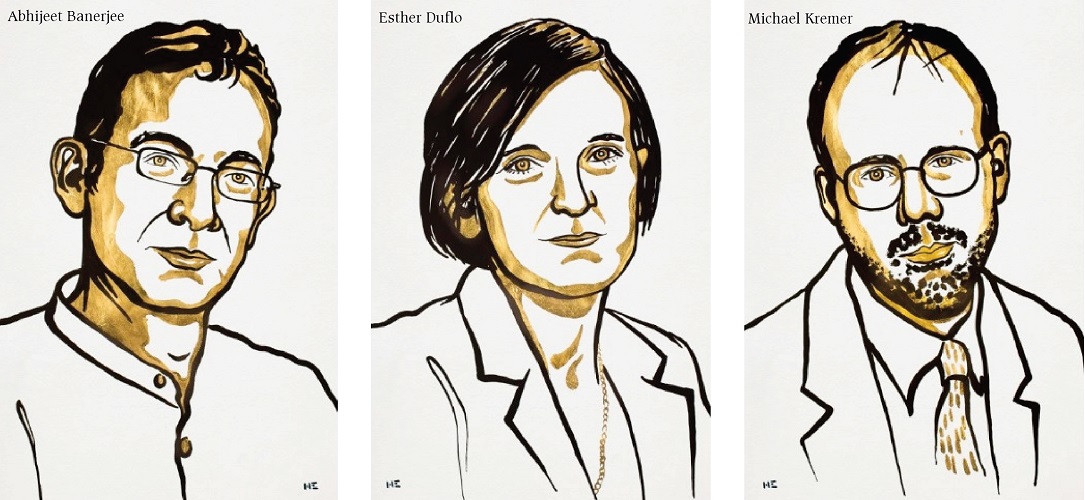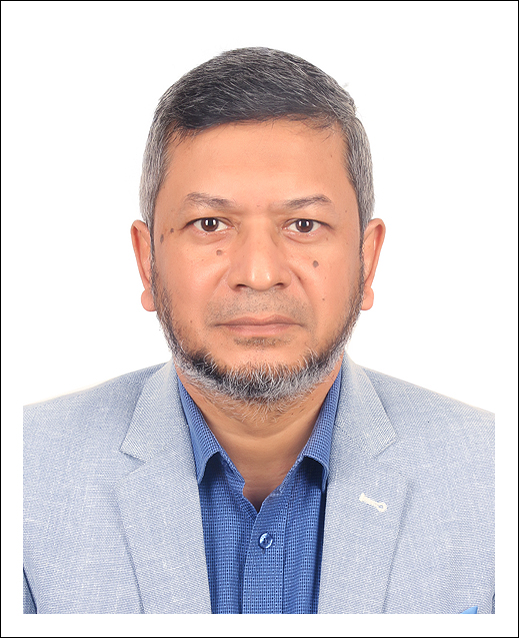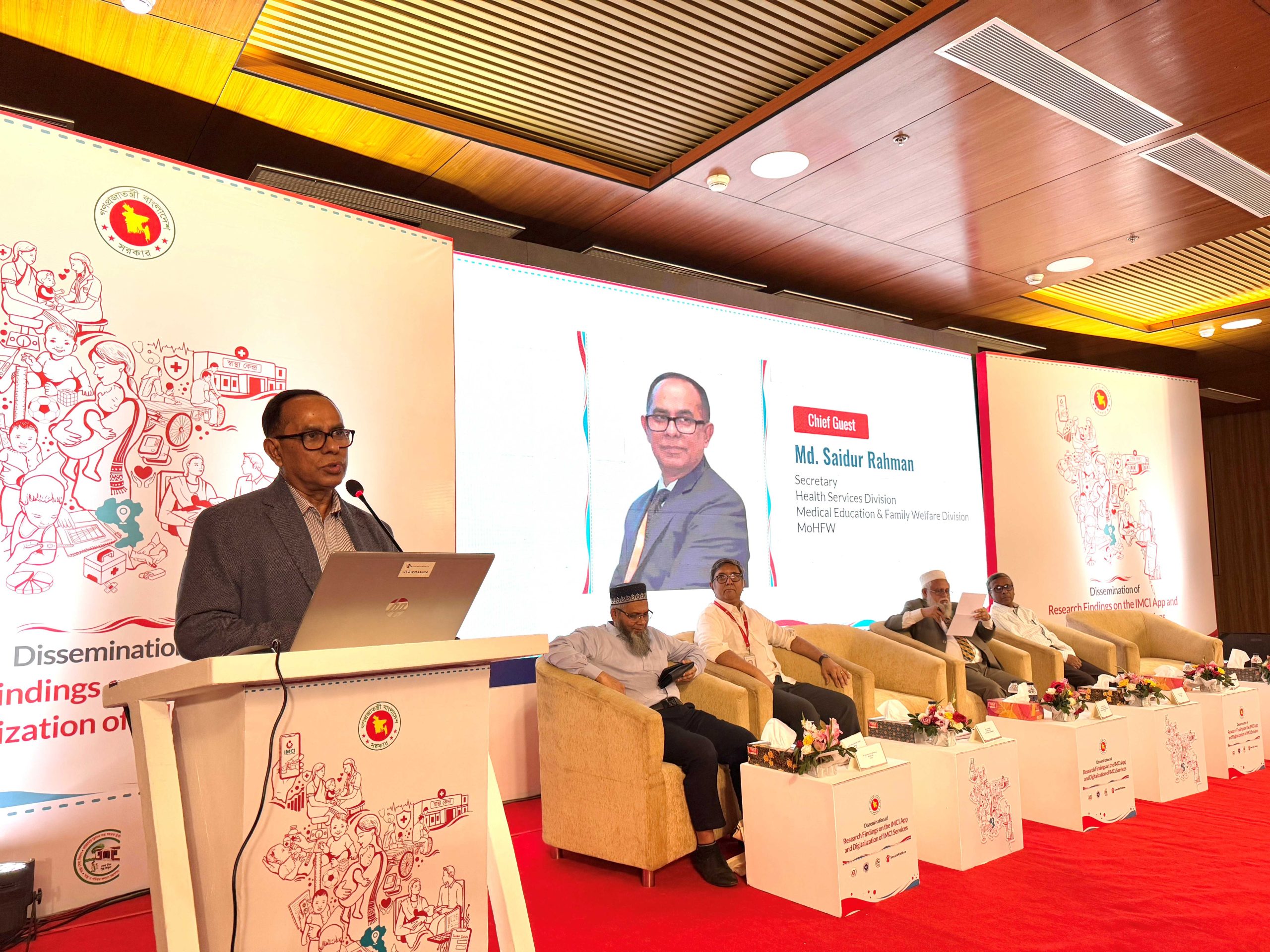Tahera Ahsan guides us through the Experimental Approach to Poverty Alleviation model designed by Nobel prize winners Abhijit Banerjee, Esther Duflo, Michael Kremer.
Global poverty has been a persistent drag on human development progress since as far back as economic history goes, and despite massive progress in past decades, it remains one of our most entrenched issues. Research and progress in recent years have shown how multidimensional it is and that the ‘one-size fits all’ approach will not work in this case. Poverty is not simply limited to a certain threshold of income, although that is one of the methods it is generally measured. Factors such as limited access to education and low quality of poor health care and low standard of living are all major contributors to the poverty levels of households, populations, and nations. The progress made for poverty and the interventions that lead to this was not simply chanced upon but was developed through decades of the most brilliant minds in economic sciences coming up with various theories to combat it. In the quest to identify strategies to help the most impoverished, three professors in Economics made waves by developing the experimental approach that has transformed development economics, and were awarded this year’s Nobel prize in Economic Sciences.
Transforming a Field
In just two decades, the pioneering work by this year’s Laureates- Abhijit Banerjee, Esther Duflo, and Michael Kremer – has turned development economics the field that studies what causes global poverty and how best to combat it, a largely experimental field― into a blossoming. Instead of looking at global poverty as one large mass, they looked closer at the variations in patterns between and within nations and different groups and then developed smaller experiments to implement interventions to answer the smaller, more directed questions. Their approach remained guided by microeconomic theory and the use of microeconomic data. But it shifted focus towards identifying workable policies, for which one can make causal claims of impact. As a result, we now have a large number of concrete results on specific mechanisms behind poverty and specific interventions to alleviate it. For example, in trying to figure out what was the cause of lagging education quality among primary school students in some least developed countries, they started developing smaller randomized controlled trials (RCT) experiments to answer the smaller more directed questions. For instance, to see what would be more cost-effective for primary schools, hiring temporary teachers in the short term or increasing the pay of teachers? Will either approach bring forth any changes to the quality of education of children? In health, the question of the cost of healthcare and uptake of preventive health care arose. Strong evidence was found through research on schooling, which shows that the employment of contract teachers is generally a cost-effective way to improve student learning. On health, poor people’s investment in preventive care has been shown to be very sensitive to the prices of health products or services, giving a strong argument for generous subsidies to such investments.
Two Compelling Ideas
The modern approach to development economics relies on two simple but powerful ideas. One idea is that empirical micro-level studies guided by economic theory can provide crucial insights into the design of policies for effective poverty alleviation. The other is that the best way to draw precise conclusions about the true path from causes to effects is often to conduct a randomized controlled field trial. The systematic application of these ideas over the past 20 years has paved the way for the transformation of development research.
Addressing Inefficiencies
First, starting in the mid-1990s, Kremer and various colleagues launched a series of field experiments in Kenya to disentangle various components in the educational production function (Kremer 2003). In essence, his approach amounted to breaking down the question of how to boost human-capital accumulation into smaller, more manageable topics, each of which could be rigorously studied via specifically designed randomized controlled trials. Soon thereafter, Banerjee and Duflo — in many cases jointly with Kremer and other co-authors — broadened the set of educational topics and launched field experiments on several other topics. These studies played a central role in expanding the new approach to basically all branches of development economics. Moreover, the research results pointed to important market inefficiencies in the private and public sectors and provided evidence on alternative ways to address these inefficiencies.
Evaluating Allocations
Second, in a series of contributions, Banerjee and Duflo articulated the intellectual case for a microeconomic approach to help understand various aspects of the broader (macroeconomic) development problem (Banerjee and Duflo 2005, 2007, 2011). Among these, the paper that Banerjee and Duflo published in 2005 is a key conceptual piece that links microeconomic development issues to low aggregate per-capita income in developing countries. The starting point for this work is an important empirical observation: low- and middle-income countries have large heterogeneities in the rates of return to the same factors of production and large variation in the extent to which profitable investment opportunities are exploited. The extent of this misallocation may be severe enough to help explain the large total-factor productivity gaps between low- and high-income countries that have been highlighted in the empirical growth literature. Intuitively, when resources are allocated optimally, the economy will operate on its production possibilities frontier. When resources are misallocated, the economy will operate inside this frontier: output and productivity will be lower than they could be. Banerjee and Duflo further argued that market and government imperfections documented in the development literature — be they government failures, credit constraints, insurance failures, externalities, family dynamics, or behavioral issues — can help explain the misallocation. The first step to understanding why some countries are poor is thus to empirically identify important sources of inefficiency and policies to address them.
The New Approach
Third, by designing new experimental-research methods the Laureates firmly established the new approach and laid out a clear course forward for a new generation of researchers. A randomized controlled trial is a method for assessing the causal impact of a certain intervention or program. In essence, it is designed to answer counterfactual questions: How would individuals exposed to a program have fared in the absence of the program? Conversely, how would other individuals who were not exposed have fared, had they had the opportunity to participate? These questions are counterfactual because, at any given point in time, an individual is either exposed to the program or not. However, it is possible to estimate the average impact of the program on a group of individuals by comparing them to a similar group of individuals who were not exposed to the program. To do so requires a credible comparison group: a group of people who would have had outcomes similar to those exposed to the program, in the absence of the program. But how does one find such a valid comparison group?
If we just compare the group of individuals exposed to a program with a group consisting of non exposed individuals, the estimated difference has two components. One component is the average causal effect of the program. But the estimated difference also would include a term reflecting selection bias: the difference in counterfactual outcomes between the two groups in the absence of the program. Without a reliable way to estimate or remove this selection bias, causal effects cannot be credibly estimated. One method to solve the selection problem is to randomly assign individuals — or more generally the units of analysis, such as households, communities or schools — to treatment and a control group. If a unit belongs to one of these groups just as the result of a random draw, the only systematic differences across the groups arise through their exposure to treatment. When correctly designed and implemented, a randomized controlled trial thus allows researchers to estimate the causal impact of a certain intervention in an unbiased way. The approach championed by the Laureates rests on a fundamental insight of economics: most outcomes one may want to influence reflect purposeful choices made by individuals. To sustainably influence the outcomes of interest, also called endpoints, one must, therefore, understand the choices that drive observed outcomes, as well as the mechanisms that mediate those choices. That is, one needs to pinpoint the causal pathways through which changes in incentives, constraints and information influence outcomes of interest via human behavior.
The strong emphasis on incentives and constraints is an important reason why designs of field experiments differ from designs in more controlled settings. These behavioral responses are not only central to understanding the experimental results themselves, but also to understanding broader human behaviors. In fact, the focus on so-called behavioral midpoints has made field experiments powerful tools for more general tests of human behavior. The responses, and their connections to economic theory, also may shed light on broader issues, beyond the experimental intervention at hand.
Guiding Forward
The approach pioneered by the Laureates yields insights on new and existing programs designed to address poverty. Combining these insights with an understanding of the local and institutional context gives powerful guidelines for development policy. But whether and to what extent such information is incorporated into real-world policy design and implementation is largely outside of the researchers’ control. Policymakers may or may not consider robust evidence of what works, and why, when they decide which policies to implement. As studied in the field of political economics, policymakers are subject to a range of constraints that can explain a failure to adopt policies that are effective. Depending on the context, these constraints can reflect the policy preferences of various actors, the technologies used in private and public production, the information and commitment capacities of policymakers, and the institutional arrangements that allocate political power. These constraints hold true both in domestic policymaking and perhaps even more in an international-aid context.
Over the past 20 years, we have seen major changes in development economics research. Several scholars have played a vital role in this endeavor. However, the broad contributions by this year’s Laureates have been essential for bringing development research to its current standing. Kremer and his co-authors pursued a set of early experiments in western Kenya that showcased the promise of splitting up the daunting global-poverty question into smaller more manageable topics, each of which could be rigorously studied via a designated field experiment. Banerjee and Duflo, often together with Kremer or other researchers, broadened and expanded the set of topics, and articulated to the research community how pieces from such microeconomic studies can help us get closer to solving the broad development puzzle. All three Laureates expanded the experimental approach to basically all branches of the field. They were also at the forefront in addressing legitimate challenges to this experimental approach and in presenting solutions to these challenges.
The contributions by Banerjee, Duflo and Kremer have encouraged and inspired a new generation of researchers to follow their lead. As a result, development economics has not just been decisively transformed but continues to be a vibrant and expanding field that yields growing evidence-based guidelines for development policy.
The writer is an Economist at the Policy Research Institute of Bangladesh and can be reached at tahera_ahsan@hotmail.com















